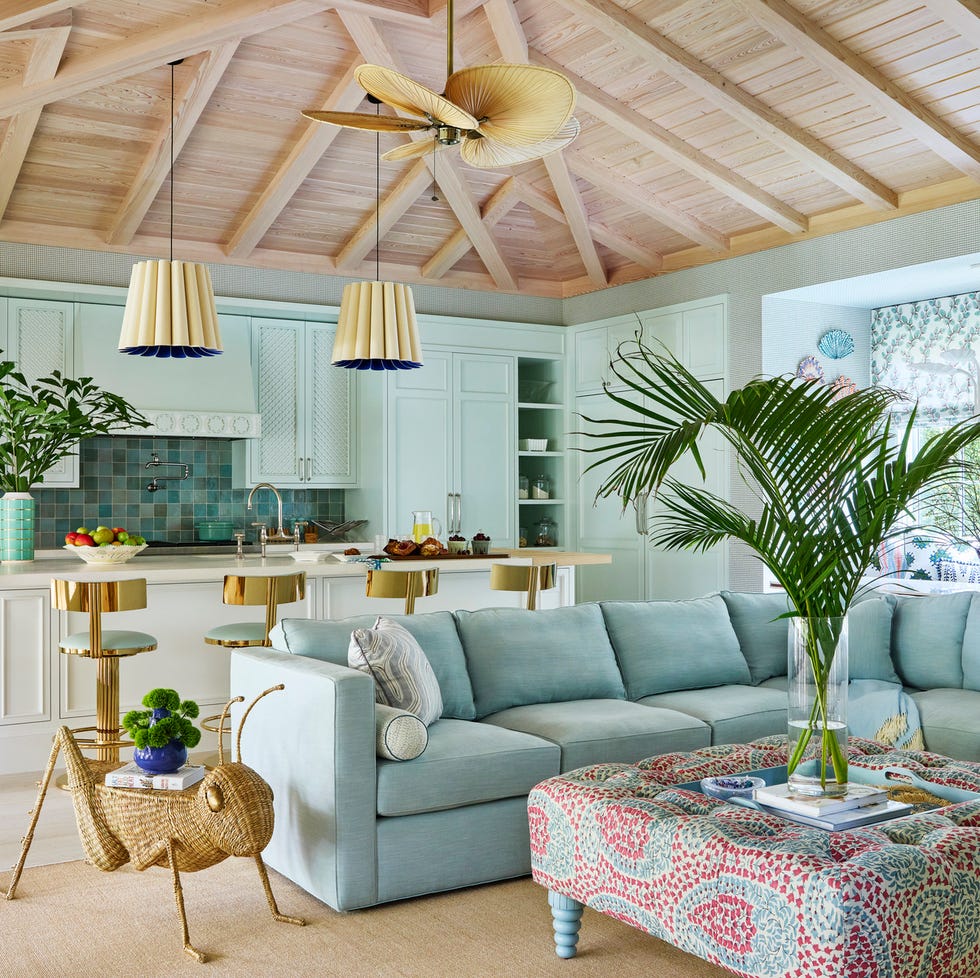Before you begin:
- If you are going to rub down wooden chairs for light waxing, woodstain or painting, perhaps spray-paint cane or metal chairs - do that first.
- Choose a strong fabric as it shouldn't crease too much from 'bums on seats'. Maybe you have some left-over curtain material or, if buying some fabric, think about getting a little extra to use as matching or contrasting cushion covers. If using patterned fabrics, make sure you consider this before you start cutting.
1. If you are covering the chair back (see top image):
- First, the back of the chair back: cut a rectangular shape about 3" / 7cm larger than the area to be covered.
- Pull the fabric straight and tight at the sides and top to create a smooth appearance and staple along the edges to hold the fabric in place, folding neatly at the corners. Trim and fold any excess material as you work, to keep it neat.
- Gently pull the bottom of the fabric down tightly and tuck under the back of the chair. Staple it underneath the seat. For a neat finish, fold the raw edge of the surplus under itself and staple again.
- Next, matching any patterns, cut another piece of fabric for the front of the chair back, again with an additional 3" / 7cm to spare at the the edges. Push the edges of the fabric into the part where the chair back and seat meet.
- Again, keeping the fabric tight and starting at the top of the chair back, fold the edge of the fabric under itself at the back edge, then staple close to the fold. Leave a gap at the edges while you fold and staple the sides of the chair back, keeping the fabric straight and at all times.
- Pull and tuck the bottom edge behind the seat, securing it tightly by stapling at the edges.
- Envelope-fold and staple the top corners. Stand back and admire!
- Matching up the pattern with the front of the chair back, cut an oversized square, large enough to cover the seat and its side edges, plus a little extra for folding under.
- Taking care with pattern matching, the fabric at the rear of the seat should be tucked in where it meets the chair back, folding the raw edges under at each side of the seat and stapled in place.
- Pull the front tight and staple underneath the front of the seat, folding and trimming for neat corners.
- Turn the chair upside down to finish off by folding the raw edges of the fabric and stapling.
- If the fabric is liable to stains, consider treating it with a protective spray.
- If the staples are too obvious (e.g. on a plain fabric) you can fix a braid over them or use decorative tack nail studs. These are now available in a fantastic range of colours, not just brass.
Instructions relate to the style of chair in the top image. Please adjust the instructions for chairs of a different style, such as shown in the image below (in this case, it would be best to remove the chair back before covering).




